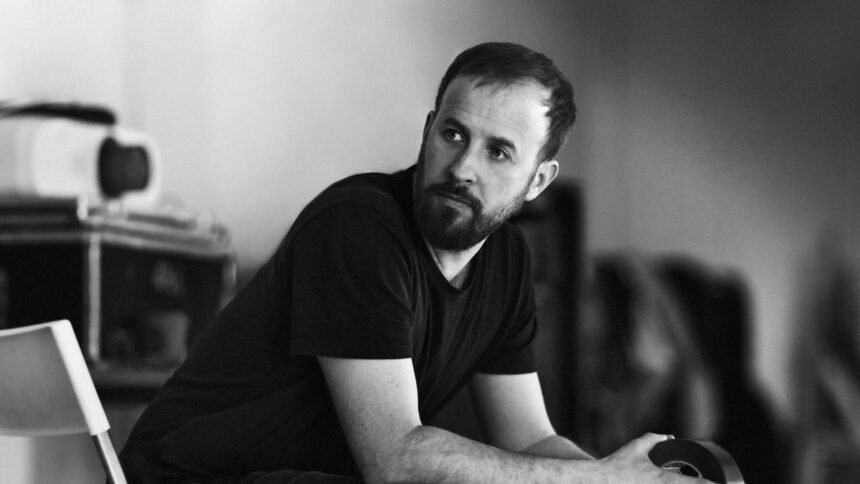[ad_1]

Dancer-choreographer Moritz Ostruschnjak
| Photo Credit: Special Arrangement
Moritz Ostruschnjak brought Tanzanweisungen (It Won’t Be Like This Forever) to Bengaluru. The dance was presented in the city as part of Attakkalari India Biennale 2024 at Bangalore International Centre.
The dance, featuring Daniel Conant, is a 30-minute solo self-reflective piece with ironic references that defy any specific definition.
The India tour of this project is supported by the Bavarian State Association for Contemporary Dance (BLZT) with funds from the Bavarian State Ministry of Science and the Arts.
Moritz ventured into contemporary dance through breakdancing. He studied at Iwanson International (Munich) and completed his training with Maurice Béjart in Lausanne. He has been working as a freelance choreographer since 2013 and is known for his works titled, Island of Only Oneland, Text Neck, BOIDS, UNSTERN and AUTOPLAY.
His works have been showcased in many European festivals and the dancer-choreographer is one of the Aerowaves Twenty21 Artists and in 2020 received the Promotion Award Dance of the City of Munich. The 41-year-old speaks from Attakkalari Centre, Wilson Garden, during his lunch break about dance and the process of creating an art work.
Edited excerpts
You started off as a graffiti artist. How did the transition from a visual to a performing art happen??
It was a gradual process. I started graffiti at 13 and it was there that I discovered hip hop and breakdancing culture. I started breakdancing and did graffiti for a while. It was later that I moved to Munich which happens to also have one of the largest breakdancing communities. We trained everyday and danced in metro stations. It was 25 years ago, when there was not much training for street dance or breakdance. I also had a friend who would share videos of ballet, break dance and contemporary dance with me. This is how my passion and journey went. I studied ballet at 19 and four years of contemporary dance and soon was working and dancing professionally.

Stills from his work, Tanzanweisungen (It Wont Be Like This Forever)
| Photo Credit:
Special Arrangement
Where does dance leave your graffiti? Do you bring in aspects of graffiti into your dance?
I do not associate myself with any one particular art form or dance style. One thing I do feel closest to my heart is contemporary dance. Because in this form everything is possible. It allows me to mix all the different styles: traditional, pop culture, hip hop or Broadway. It is an open form and I believe my work, even today, draws or is influenced by my days in hip-hop culture. Hip-hop music was invented by sampling. People would take a little from Funk and a little from Soul and put them back together and out of this emerged a new style. This is how I work with dance. All my work is inspired from bits and pieces that I have seen in videos, my training….
Do you still dance or just focus on choreography?
I am more into choreography. It takes so much of my time and my energy goes into organising and touring with my dance pieces. So I do not find the time to be a dancer. I am okay with this as I enjoy working with dancers and teaching.

In Indian classical dance, we have a foundation and a guru who teaches. As a teacher yourself, how much freedom is given to the dancer, how much of your ideas are imposed on them? Or do you just act as a facilitator?
I am not a fan of the term guru or this god-like figure. If you look culturally, everything comes from somebody. There is always someone before you who has taken information, worked on it and taken it further. Inventing something out of nothing is a myth. I do not believe in the concept that I am god-like and hence can dictate my creation. I work from a space that says things are already there and you have to make yourself sensitive in order to see those things. My style is more task-based work. I research and try to come up with certain methods that work with the time that we live in. Then the dancer is given certain tasks. For me, it is important that there is a dialogue between my dancer and me. I am also interested in understanding the movement archive and history of the dancer’s body and the technique that comes with them. Sometimes, I do act as a facilitator, and can also be strict!
Are you open to working with anyone or do they have come with a certified training in dance?
Classical ballet is not the criteria for me. I have people in my group that do not come with an academic background. They, however, have a lot of dance in them. What I look for is playfulness and curiosity as a lot of things are tried out to come to finalised ideas. It is also important that the dancer is not judgmental but is open to discovering new ideas. Dance is also about hard work.
Do you see any difference in Indian contemporary dance? Our classical dances are all gravity-oriented whereas modern dance is all about defying gravity.
It is difficult to define contemporary dance. What is contemporary in Europe may not be so in India, Japan or Hong Kong. In the dancers I have encountered here, I do see a difference. In Europe contemporary training is more individualised and is based a lot on self expression. In India I see the beauty of classical dance being brought into contemporary dance, and find that amazing. We do not have much knowledge about form or rhythm. In Germany we do not have this traditional background, which is sad and this is where India is unique and I find its influence in the contemporary context extremely interesting.
[ad_2]
Source link









